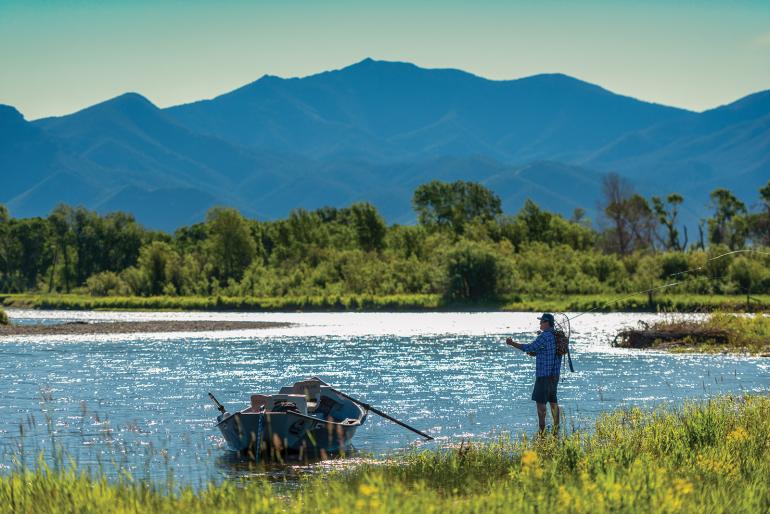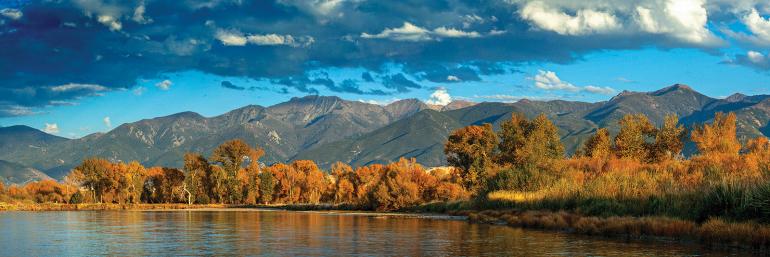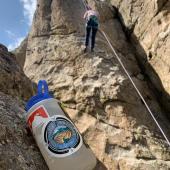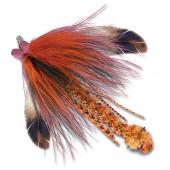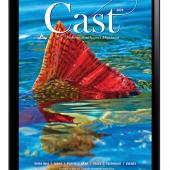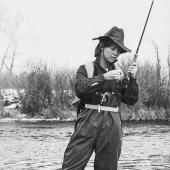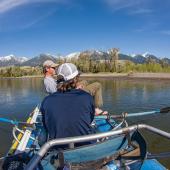Jefferson River
A sleepy giant.
The Jefferson River is born of the confluence of the Big Hole and Beaverhead rivers just north of Twin Bridges. About 85 miles downstream, it joins the Madison and Gallatin rivers to form the Missouri. For many anglers, the Jefferson’s appeal is limited for one reason: low fish counts. It’s hard to get excited about a river with barely 1,000 trout per mile (at best), when the nearby Madison and Missouri have counts in the thousands. But for a certain type of angler, the kind that brings a steelhead-stalker mindset to the river and flouts the numbers in search of size, the Jeff offers something more. Rumors of browns and rainbows in excess of two feet keep these trout zealots coming back. The other thing about this river that’s appealing to the madcap angler is that it’s one of the last trout rivers in Montana that doesn’t feel crowded. It’s not uncommon to see fewer than five boats or enjoy vast sections of river to yourself, even on summer weekends. For now, solitude lives on the Jefferson.
Access
There are 10 official access sites spread evenly along the Jefferson. In addition to these, the Jefferson River Canoe Trail (jeffersonriver.org) offers several hand launches with campsites. In between lies a good deal of private land, but as long as you’re within the high-water mark, you’re legal. Some of the Jefferson’s boat ramps—Waterloo Bridge and Parrot Castle, for example—are a little rough. Floaters should scout them before use.
Flows
The most fishable flows are between 1,000 and 2,000cfs, before and after runoff. The river is susceptible to high spring flows exceeding 12,000cfs in big-snowpack years, and isn’t fishable or safe till the water calms. Post-runoff fishing is often the best time to target big fish. But this period can also be very brief, as irrigators often ask a lot of the Jefferson, despite the introduction of more efficient irrigation systems. Though this has improved the fishery over the past couple decades, the Jefferson is often the first river each summer to fall under hoot-owl restrictions––closures to fishing from 2pm to midnight due to high water temps.
When to Go
The Jefferson is a temperamental river and is exposed to extreme weather changes. Certain times are better for fishing than others. Conditions are often ideal here pre-runoff (usually April), as there’s enough clear fishable water and good water temperatures for trout. Bugs like baetis and skwala stoneflies can also pop at this time, offering some of the best dry-fly opportunities of the year. Post-runoff, usually late July to early August, is another good time to fish the Jeff, so long as temperatures remain mild. And when cool water returns in late September and October, streamer fishing can be productive.
Fish
Browns, rainbows, and whitefish are the river’s primary residents. The lower river, where trout numbers are very low, hosts some carp and pike. Both browns and rainbows can exceed 24 inches in length, but these fish are earned, not expected.
Row vs. Wade
Both wading and floating are possible on the Jeff, but floating is the preferred method. There are boat ramps every few miles, offering great options for float length and variation. Popular floats include Silver Star to Waterloo (Parsons Bridge), Waterloo to Parrot Castle, and Sappington Bridge to Williams Bridge. There are some diversion dams to be aware of, including one directly downstream of Waterloo (walk or rope the boat down this one) and another at Parrot Castle. Jefferson River Canyon, located on the stretch between the Cardwell FAS and Sappington Bridge, is another popular float, but plan on a long day––it’s about 15 miles from start to finish.
Regs
Fishing is closed within 100 yards from the mouths of Hells Canyon Creek and Willow Springs Creek from April 1 to May 1 and September 30 until December 1. Keep apprised of hoot-owl closures, and always check FWP regulations for the most up-to-date information about fishing restrictions and bag limits.
Getting There
From Bozeman, it’s only about a half-hour drive to the west, via I-90 or the frontage road, to the confluence of the Jefferson at Missouri Headwaters State Park. To get to the fishier sections around Silver Star, Whitehall, and Cardwell, continue on I-90 for about 25 miles to Cardwell or Whitehall and head south.
Joshua Bergan has written columns for Montana Sporting Journal and American Angler, among others, and is the author of The Flyfisher’s Guide to Southwest Montana’s Mountain Lakes.


